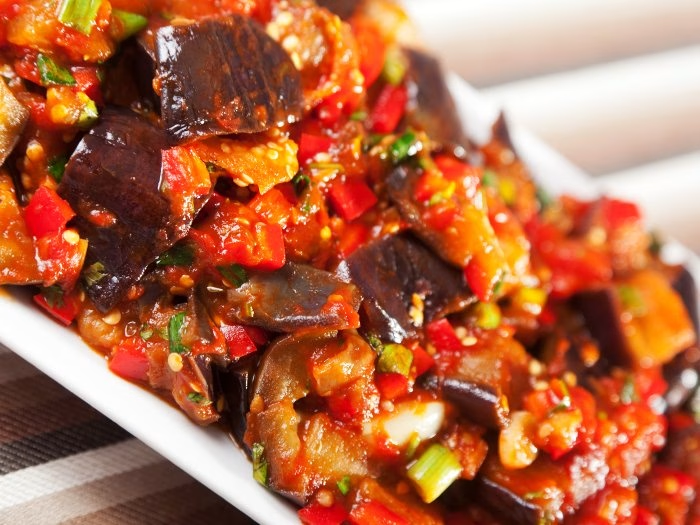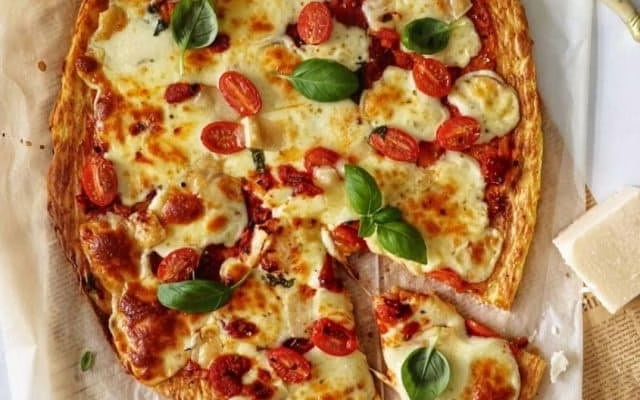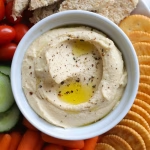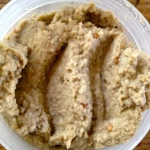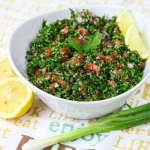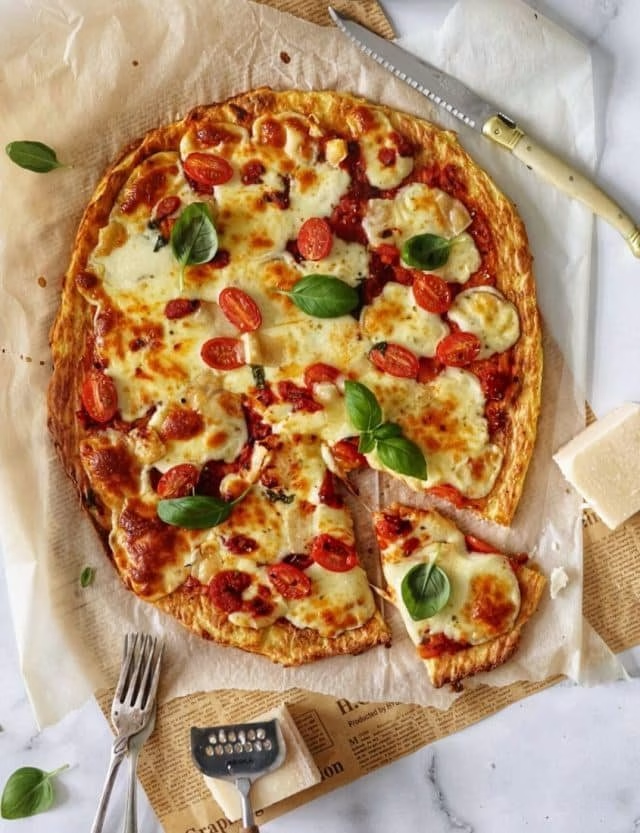
Introduction
Mousakhan, often hailed as the “Lebanese pizza,” is a delightful dish that brings a wonderful blend of flavors straight from the heart of Middle Eastern cuisine. This traditional dish is primarily made with succulent chicken marinated in aromatic spices, served atop a flatbread base and baked to perfection. Its roots can be traced back to Palestinian villages, where it has been a staple for centuries, often enjoyed during special occasions and family gatherings.
What makes Mousakhan truly special is its unique flavors, combining the warmth of spices with the sweetness of caramelized onions and the comforting taste of bread. In this article, you’ll learn how to recreate this iconic dish in your own kitchen. From the essential Mousakhan (Lebanese Pizza) ingredients to tips for perfecting your homemade Mousakhan (Lebanese Pizza), you’ll be guided every step of the way.
Ingredients
To create an authentic Mousakhan (Lebanese Pizza), you’ll need the following ingredients:
| Ingredient | Measurement | Description |
|---|---|---|
| Boneless Chicken Thighs | 500 grams | Tender and juicy chicken thighs are ideal for Mousakhan, ensuring each bite is flavorful. |
| Sumac | 2 tablespoons | This tangy spice is a staple in Lebanese cooking, giving Mousakhan its distinct flavor. |
| Onions | 3 large | Sweet, caramelized onions provide a rich base that complements the chicken beautifully. |
| Olive Oil | 1/4 cup | Extra virgin olive oil adds richness and depth of flavor to the dish. |
| Pine Nuts | 1/4 cup | Toasted pine nuts add a delightful crunch and nutty flavor, elevating the dish. |
| Flatbread (Arabic bread) | 3-4 pieces | Traditionally used, the flatbread serves as a perfect base for the toppings. |
| Salt and Pepper | To taste | Essential for enhancing the flavors of the ingredients. |
Step-by-Step Instructions
**Step 1: Marinate the Chicken**
Begin by placing the boneless chicken thighs in a bowl. Add a generous sprinkle of salt, pepper, and 1 tablespoon of sumac, along with half of the olive oil. This marinade will infuse the chicken with an incredible depth of flavor essential for your homemade Mousakhan (Lebanese Pizza). Cover the bowl and let it marinate for at least 30 minutes, or up to several hours if you have the time.
**Step 2: Prepare the Onions**
While the chicken marinates, slice the onions thinly. In a large skillet, heat the remaining olive oil over medium heat. Add the sliced onions, stirring frequently, until they become soft and golden brown—this should take about 15-20 minutes. The caramelization process is crucial, as it enhances the sweetness of the onions, creating a delicious foundation for your Mousakhan (Lebanese Pizza).
**Step 3: Cook the Chicken**
Once the onions are ready, push them to one side of the skillet and add the marinated chicken thighs. Cook until the chicken is golden brown and cooked through, about 6-8 minutes on each side. Sprinkle the remaining sumac over the chicken while it cooks. This step is vital for locking in flavor and tenderness, leading to the best Mousakhan (Lebanese Pizza) experience.
**Step 4: Assemble the Dish**
Preheat your oven to 375°F (190°C). On a large baking tray, lay out your flatbreads. Spoon the caramelized onions generously over each piece, followed by placing the chicken on top. Drizzle any remaining juices from the skillet over the assembled flatbreads. Finally, garnish with toasted pine nuts for added texture.
**Step 5: Bake and Serve**
Place the tray in the oven and bake for about 10-12 minutes, or until the bread is crisp, and everything is heated through. Serve your Mousakhan (Lebanese Pizza) hot, perhaps with a side of fresh salad or yogurt for dipping. Enjoy the authentic flavors of Lebanon right at your dining table!
Pro Tips
– *Use high-quality olive oil*: It makes a significant difference in flavor. The best Mousakhan (Lebanese Pizza) deserves the best ingredients!
– *Experiment with spices*: While sumac is traditional, you can also add a pinch of cinnamon or allspice for a unique twist on flavor.
– *Make it ahead of time*: You can prepare the chicken and onions a day before, which can save you time if hosting guests.
– *Consider variations*: You can make Mousakhan vegetarian by using roasted eggplant or mushrooms instead of chicken.
– *Serve with fresh herbs*: A sprinkle of parsley or mint on top adds a burst of color and freshness.
Nutritional Information
| Nutrient | Per Serving (Approx. 1/4 of recipe) |
|---|---|
| Calories | 450 |
| Protein | 30g |
| Carbohydrates | 32g |
| Saturated Fats | 5g |
| Fiber | 4g |
| Cholesterol | 80mg |
| Sugars | 2g |
| Fat | 24g |
FAQs
**What is the best way to store Mousakhan (Lebanese Pizza)?**
Store any leftover Mousakhan (Lebanese Pizza) in an airtight container in the refrigerator for up to 3 days. Reheat in the oven for the best texture.
**Can Mousakhan (Lebanese Pizza) be made vegan or gluten-free?**
Absolutely! Substitute the chicken with vegetables such as mushrooms or chickpeas and use gluten-free flatbread to make it suitable for various diets.
**What are the best side dishes to serve with Mousakhan (Lebanese Pizza)?**
Fresh tabbouleh, a cucumber and tomato salad, or even a light yogurt dip complements Mousakhan perfectly.
**How long does it take to prepare Mousakhan (Lebanese Pizza)?**
Preparation takes about 15 minutes, and cooking time is around 30-40 minutes, so you can whip up this delicious dish in under an hour.
**Can I freeze Mousakhan (Lebanese Pizza) for later?**
Yes, you can freeze Mousakhan. Just wrap it tightly in foil or plastic wrap and store it in an airtight container. It can be frozen for up to 3 months.
**Is Mousakhan (Lebanese Pizza) gluten-free?**
Traditional Mousakhan (Lebanese Pizza) uses flatbread, which is not gluten-free. However, you can substitute it with gluten-free flatbread to enjoy the flavors without gluten.
**Can I use other meats for Mousakhan?**
Yes! Lamb or even beef can be delicious alternatives to chicken. Just adjust cooking times as necessary for different meats.
**Is Mousakhan traditionally eaten at certain times of the year?**
While Mousakhan is enjoyed year-round, it is often served during special occasions and family gatherings, making it a beloved dish in Lebanese and Palestinian cultures.
